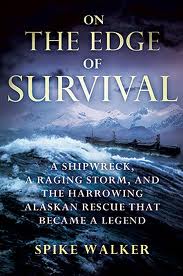Willy Vlautin
Harper Perennial

|
We heard coyotes whine and it seemed like an ocean of them surrounding us … In the middle of the night Pete pulled away from me and the rope around my ankle tugged and I woke up. I untied the rope and went to him and pet him and we stood in the darkness and you could tell he was worried. I told him what a good horse he was, and how fast he was. I told him we’d find a place where both of us could stay for a long time. A place where his feet would get fixed, a place where there was a lot of food. --from Lean on Pete |
Spare, bleak tale deepens, touches to the core
From the first chapter, you know you’re in Steinbeck country, and I don’t mean the Salinas Valley.
Charley Thompson is a lonely and alone fifteen-year old who, traveling around with his father, never stays anywhere long enough to finish a school year. When they show up in Portland, Charley hangs out at the nearby Portland Meadows racetrack and begins working for Del Montgomery.
Through Charley’s eyes, we are introduced to the seamy, underside of horse racing, of drugged horses, and owners like Del who runs them into the ground until they can’t run anymore, then sells them for dog food. One of his horses, Lean on Pete, becomes Charley’s only friend.
When his dad is badly beaten and taken to the hospital, Charley is truly on his own, and, stealing Pete, he sets out for Wyoming to find his only aunt.
This is a bleak, gritty novel, deeply moving, at times heartbreaking. One longs for a grace note of humor, a glimmer of hope, a touch of kindness, something to redeem humanity. Like Steinbeck’s Grapes of Wrath, or McCarthy Cormac’s The Road, such bleak, cheerless tales deepen us and touch us to the core. This, too, is life, they seem to say.
Vlautin, a Scappoose singer and songwriter as well as author of three books, has a lean, spare prose style reminiscent of Raymond Carver, which is not an accident. He describes the impact on him of discovering Carver: “I started writing as hard as I could from that moment on. The stories just started pouring out. I had all this sadness and darkness on my back, and I didn’t know what it was. I was just a kid. But Carver opened it all up.”
Charley’s seeking a home could be a metaphor for the journey each of us is on: crossing a desert, essentially alone, where hope remains forever a faint figure—possibly a mirage—on the horizon.
It may sound like an odd recommendation (You got to read this book! It’s really bleak!) but when we read writers like Steinbeck, Carver, Cormac, and Vlautin, they open us up to the sadness and darkness on our own backs. And perhaps that’s why we read them.
This review first appeared in The Columbia River Reader (May 15-June 14, 2011). Reprinted with permission.
Willy Vlautin
Harper Perennial
$13.99












